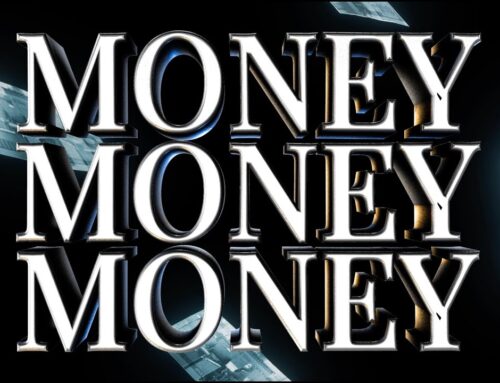The Advisory Committee on Immunization Practices.
You may be old enough to have lived through the Watergate fiasco [a minor political scandal considering the whoopers of recent years, eh?] and the resulting film, All the President’s Men. In that film is a famous line: “Follow the money.”
Science used to be, well, science. It was something people placed their trust and faith in, in error. Oh, sure, all the established understandings of gravity, the planets orbit around the sun, and the things most people could see, hear, and know themselves, along with myriad scientific discoveries when science was for the most part still science, as established, and had not gone green with greed, gone to the dark side with an agenda were good to follow. No question there.
But…things have changed dramatically within the past 50, 60 years…
Folks might not like hearing this, many refuse to believe it, but there should never have been ANY division of thought regarding “Do we follow God or science?” because, as I’ve said for many, many years God [that is the Triune God of Father, Jesus, and the Holy Spirit] are The Master Scientist having created all there is the seen and the unseen. All things were created by God. He has instilled in everything, both known and unknown science, that men and women, very intelligent men and women, strive to understand and explain.
At least that used to be one of the primary pursuits of science.
No longer.
It’s been this way for quite a while now.
It isn’t going to improve or change for the better. Time to understand this and prepare accordingly.
Might not like this, might not agree. might think I’m nuts, stupid, and many other unsavory things but unless you come to the realization of what is what and why and that there is only one answer leading to every question, every ill of mankind, everything there is you’re going to be more than eternally disappointed, in disagreement, dealing with so much more than you can now imagine.
It’s all about, only about Jesus. Jesus Christ. The LORD. Jesus of Nazareth, and coming to Him and understanding what He did and why when He came in the flesh to this corrupted and sin-filled world.
The greatest equation leading to the greatest discovery on earth, forever, is Man v Woman x Faith in Jesus + Repentance = New Life, Real Life, Eternal Life.
Read on…
Ken Pullen, Tuesday, August 19th, 2025
Blinded by the Science
Tuesday, August 19, 2025
By Jeffrey Tucker
Reprinted from The Epoch Times
This is the age of science. We are led by facts and data, not faith and superstition.
That’s what we’ve been told for centuries. And mostly we have believed it. We have good medicines, tremendous technologies, and instant information about everything. This is the product of science.
And yet, every orthodoxy is subject to abuse when it is no longer questioned. This is what we’ve experienced for some years now. When the scientists come along with schemes to change our lives in ways that contradict intuition, we are right to question them.
It does not matter how many times we are told that the “science is settled,” we should still not give up the use of our own rational faculties, in case there might be some funny business going on.
This weekend presented me with an incredible example of just such a thing. To understand it requires us to travel back to June of this year. A newly formed committee was meeting to consider the efficacy and safety of various products being pushed by industry on the CDC and FDA. The committee is called ACIP, for the Advisory Committee on Immunization Practices. It is served by various other committees from the CDC.
This hearing might have been the most watched in history simply because the technology is available and also everyone was curious how the new committee would operate following the summary dismissal of the entire old committee.
Among other products, the committee considered and voted on a new RSV monoclonal antibody for babies made by the company Merck. It seemed to be a new version of an already approved drug, so controversies were expected. The CDC threw around some data and assured the committee that all was great.
One member, however, raised some questions. Retsef Levi of MIT had noted some unusual safety signals in the data. He had not had time to look carefully but expressed reservations. He spoke in very human terms that he would not be entirely comfortable in giving this drug to his own child. As a result, he voted no. He was joined by one other member but it was not enough to stop passage.
Months have gone by and outside experts have had a chance to examine the post-market safety data more carefully. The journalist Maryanne Demasi discovered a serious anomaly that was so deeply buried that it was easily overlooked. The data showed no significant signal among groups of tests divided between babies 0 to 37 days and babies 38 days to under 8 months.
Sounds boring, right? That is precisely what the company and the CDC committee hopes you will think. But actually, if you pool the exact same data, you get different results.
As Demasi writes, when the data is pooled, “babies were nearly four times more likely to have a seizure shortly after the injection (3.93, 95 percent CI 1.21-12.79). This result is statistically significant (p=0.02), making it unlikely to be a chance finding—a fact confirmed by three independent experts.”
There’s another problem too. They used a non-variable risk window, counting seizures only in the first week after injection (days 0–7) and treating the following two weeks (days 8–21) as a “control” period. If the seizure happened on the 8th day, it was treated as unrelated.
Between the two, the study cited as proof that the treatment was fine was essentially bogus. Retsef’s intuition was exactly correct. But now it is too late. The CDC has already signed off on the drug and millions of babies will receive this on the promise that it protects against RSV, when, in fact, it might be unsafe.
Astounding, isn’t it? You only need to discover one of these incidents to raise profound questions about the whole, including the merchants who are making drugs, running tests, and pushing them on agencies they partially fund, and also the committees that are serving these outside advisory groups.
You get the impression of a system that is locked up at all ends, without any real accountability.
What gets my goat is how these companies and agencies are abusing public trust in science. When the numbers are flying at us from credentialed and high-paid people with erudition, we don’t feel qualified to contradict them. Also, we assume they will have an answer for everything, and then we’ll feel dumb.
I began to notice this during the COVID period. Thousands of studies were being tossed around that so happened to accord perfectly with the advice being issued by public-health authorities.
I learned over time to spot obvious problems.
The first problem is modeling. This is easiest to spot. Models are constructed with certain assumptions built in. They are then run with large numbers and the implications are traced out. But all of this is subject to the old problem of garbage in and garbage out. You can reject all of this out of hand.
The second problem is subject bias. This is an interesting case of using a study group that is more likely than the control group to engage in the behavior that is being tested. For example, you might conclude that a certain treatment is effective based on how a certain population receiving it is healthier than the population that did not. But it might be the case that the treated group simply cares for their health more in general while the control group does not.
A third problem is the time period bias. Researchers can manipulate the start dates to keep away results they don’t like. For example, a major study came out last year that associated less stringent lockdowns with more deaths. I didn’t believe it so I took a second look. As it turns out, the dating of the study excluded a period in which the most deaths occurred in the most locked-down states.
A fourth problem confuses correlation with causation, an amateur error but one that is extremely common. If I told you that eating caviar and drinking champagne would make you rich, you would immediately see that I had made a mistake. But if I said that drinking red wine improves your heart condition, would you still see the error?
The fifth problem is biased data assembly, as in the case of the monoclonal antibody study. The researchers clearly divided up test groups to get the results they wanted. Reassemble the data differently and you get entirely different results that indicate serious problems.
These are just some of the ways science is abused. There are many more. These problems all result from the way in which our cultures have come to be impressed and intimidated by anyone with a credential claiming to fling around high-level data.
How much of “the science” is actually fake? We don’t really know. Is it any wonder that so many people have lost trust? We talk about the Age of Science but is it really? Or is this just an age in which we are encouraged to let go of critical thinking skills in favor of deference to experts?
We need not be against science. We need more skepticism toward all the ways in which science is being abused.
Jeffrey A. Tucker is the founder and president of the Brownstone Institute and the author of many thousands of articles in the scholarly and popular press, as well as 10 books in five languages, most recently “Liberty or Lockdown.” He is also the editor of “The Best of Ludwig von Mises.” He writes a daily column on economics for The Epoch Times and speaks widely on the topics of economics, technology, social philosophy, and culture.








Leave A Comment
You must be logged in to post a comment.